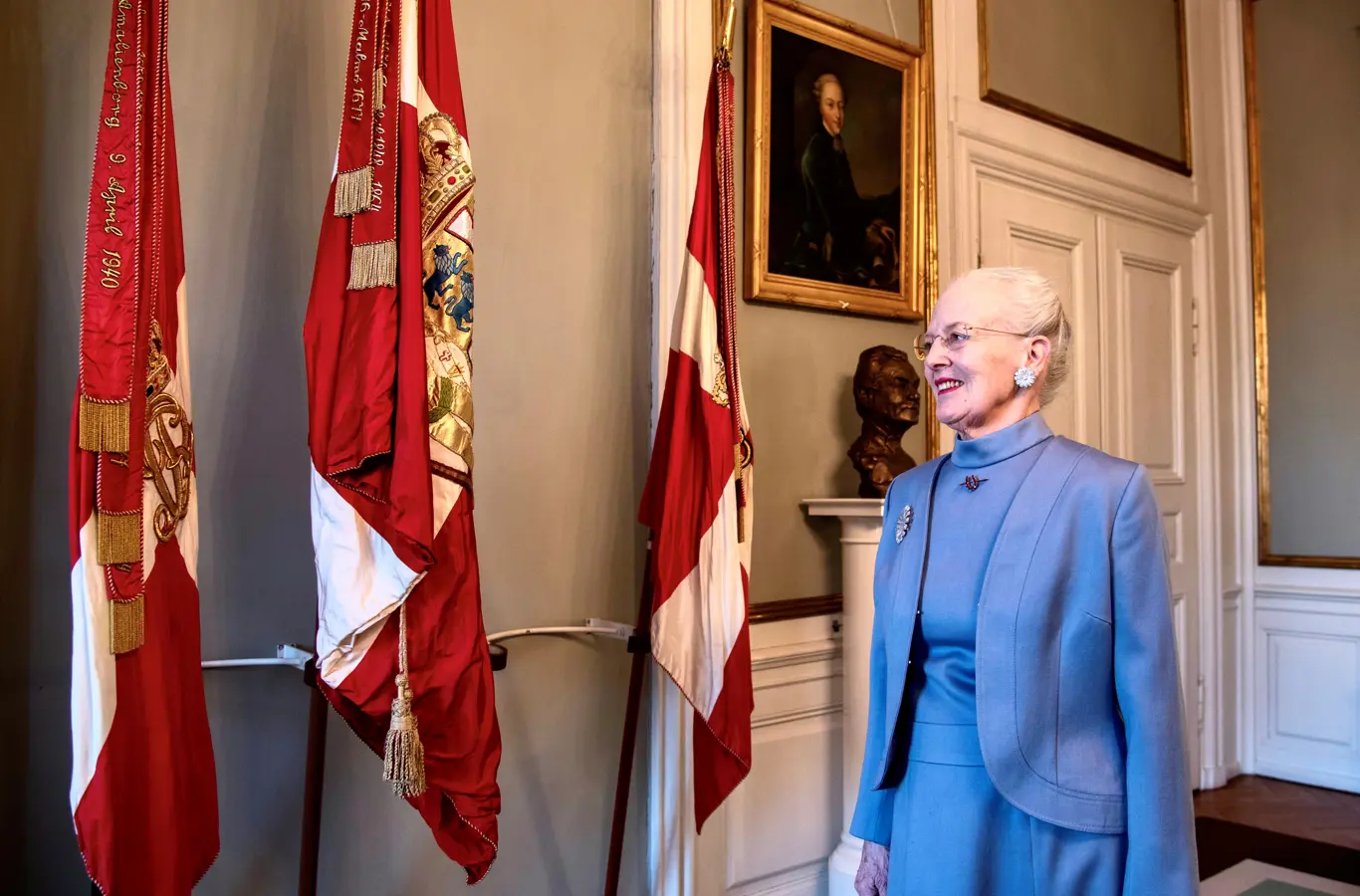The transfer of the royal flags
The transfer of the royal flags from the departing monarch’s residence to the new royal residence at Amalienborg is a solemn and symbolic indication of the succession of the throne. The flags are always placed in the reigning monarch’s palace.

After the proclamation from the balcony at Christianborg Palace on 14 January, the flags will be taken from HM Queen Margrethe’s palace (Christian IX’s Palace) to HM King Frederik X’s residence palace (Frederik VIII’s Palace) at Amalienborg at 17:00. Precisely 52 years ago, on 14 January 1972, the flags were brought the opposite way from Frederik VIII’s Palace, where Frederik IX and Queen Ingrid resided, to Christian IX's Palace.
The flags are carried over Amalienborg Palace Square by a flag command, which consists of the Commander of The Royal Life Guard’s Sentry Company, the Second-in-Command of the Sentry Company, three commissioned or non-commissioned officers as flag bearers as well as six on-duty guards as sentries. The gala flag is carried in front.
Only three flags are transferred, while one gala flag remains with the King’s Guard that has been formed.
When the Commander of the Sentry Company and the flag bearers have arrived at the Flag Room in Christian IX’s Palace, the Commander will request The Queen’s permission to transfer the flags. The three flag bearers will individually salute the flags and then each take their flag. The gala flag is taken first.
When the flag command has carried the flags over the palace square to the new royal residence, Frederik VIII’s Palace, the Commander of the Sentry Company will salute The King and ask permission to transfer the flags. The flags are handed over to The King, who places them in the flag supports that have been set up in the Marble Hall, which hereafter will be designated the Flag Room.
After delivery of the flags, the Commander of the Sentry Company leads the flag command back to Christian IX’s Palace and, from there, to the sentries’ quarters.
As part of the ceremony surrounding the succession of the throne, the symbols of service are handed over. This means that the Lord Chamberlain’s baton and the Master of Ceremonies’ baton will be handed over by Queen Margrethe’s new Chief of Court and the Master of Ceremonies to the new Lord Chamberlain as a symbol that the functions are now transferred to the new Court.
Facts
The flags are made in the colours of the Dannebrog, in red silk with a white silk cross and gold embroidery in the middle of the cross. The two gala flags, of which only one is transferred on 14 January, are larger than the other two. The gala flags date back to 1847 and have a large royal coat of arms embroidered over the middle of the crosses on the flags and so-called flag spears at the top with the monograms of Frederik V and Christian VIII, respectively. The two other flags are two of The Life Guard’s four battalion flags in all. One is from 1924 and has Christian X’s embroidered monogram over the middle of the cross and in the spear, and the other battalion flag is from 1983 and has Queen Margrethe’s embroidered monogram and Frederik IX’s monogram on the flag spear.
Each flag has three long, identical ribbons, which are attached to the flag spear, and which are given for a special effort in battle. The ribbons are made of red silk with gold-embroidered texts. Embroidered on one ribbon is “Kjøbenhavn 1658-1659 - Nyborg 1659 - Lund 1676 - Malmø 1677", on the second “Helsingborg 1710 - Gadebusch 1712 - Stralsund 1715 - Isted 1850 - Dybbøl 1848 og 1864" and on the third “Amalienborg 9. april 1940". The texts refer to The Royal Life Guard’s participation in the Swedish War, the Scanian War, the Great Northern War, the 1st and 2nd Schleswig Wars and in the fighting at Amalienborg at the beginning of the Second World War.

